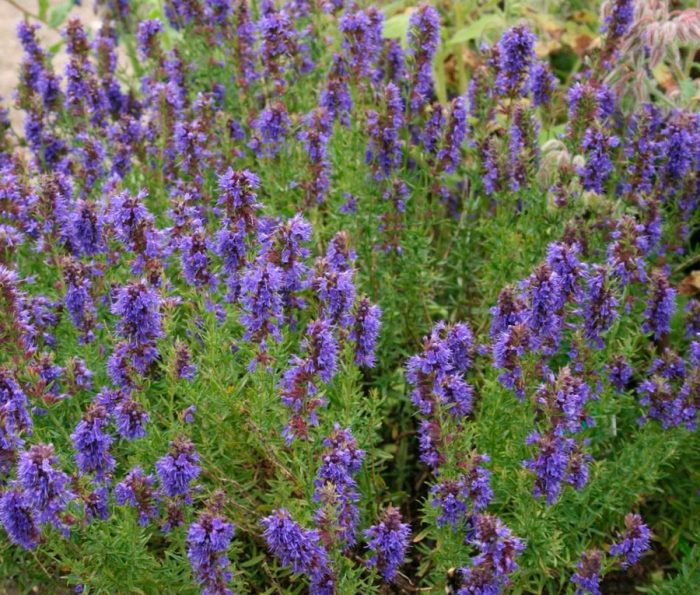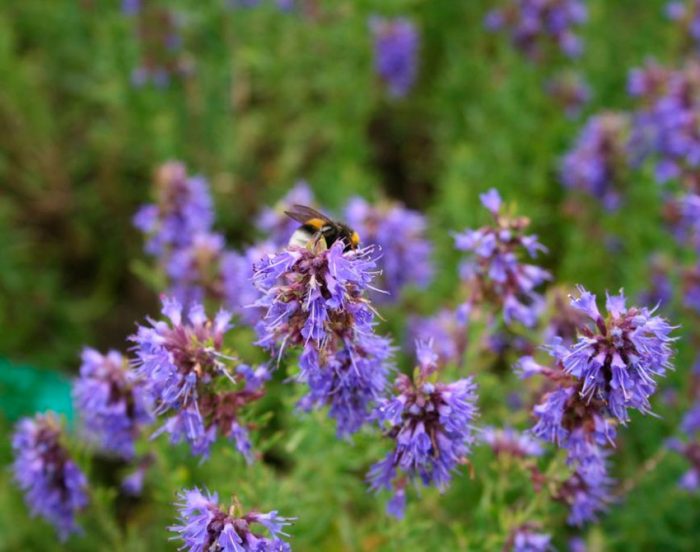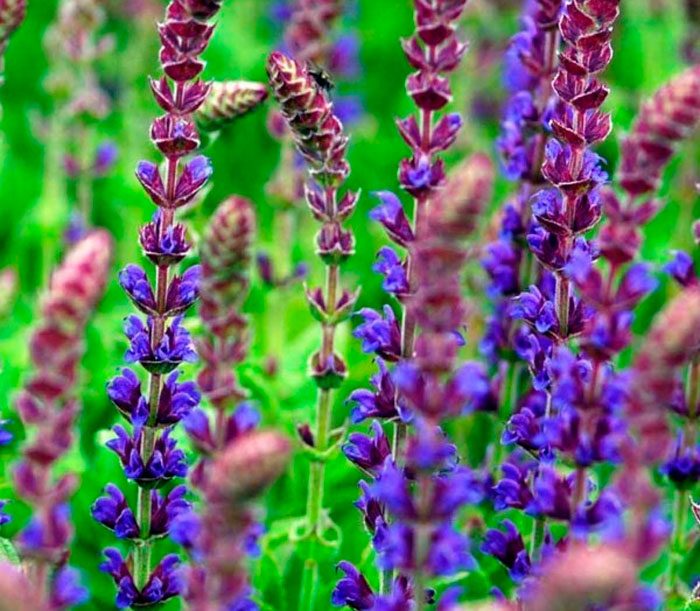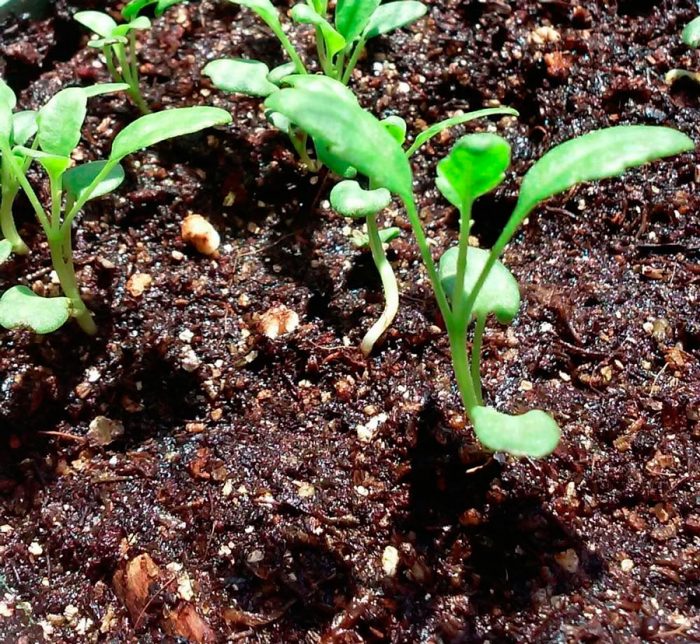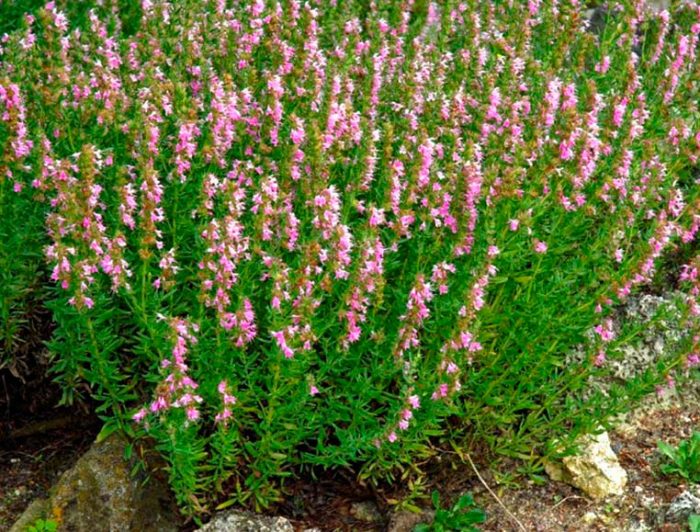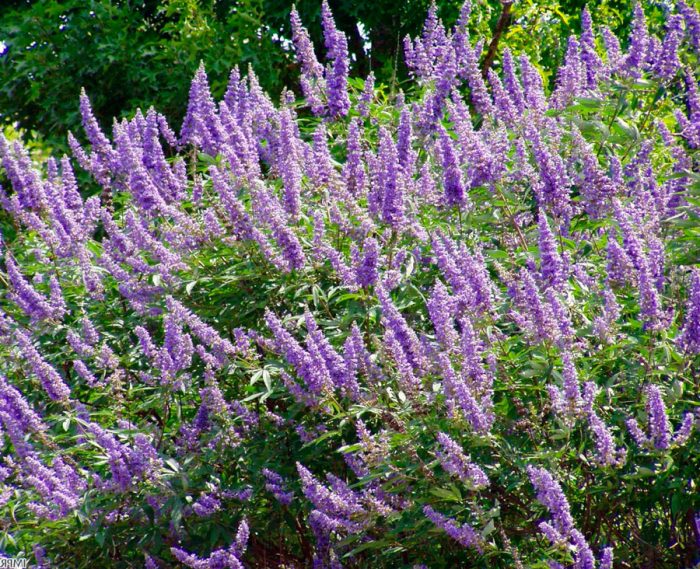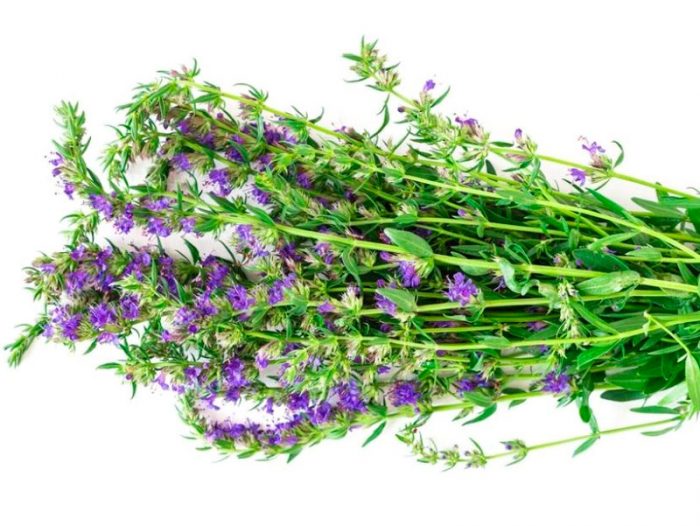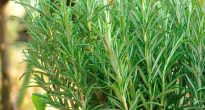Hyssopus officinalis, either blue St. John's wort, or common hyssop is a species of the genus Hyssop of the Lamb family. Under natural conditions, such a plant can be found in Western Asia, Eastern, Central and Southern Europe, in North Africa. This plant is cultivated in North America and practically throughout Europe. Hyssop is considered a very ancient medicinal plant, even Dioscorides and Hippocrates used it to treat patients. Dried and fresh young shoots with foliage are used as a spice for first and second courses, as well as snacks. This plant is included in dietary meals. A very famous physician Arnold from Villanova at the beginning of the 16th century wrote a poem, which he dedicated to medicinal plants, it was called the "Salermo Code of Health". It contains the following lines about this culture: “The herb, which is called hyssop, cleanses the chest from phlegm. Hyssop is useful for the lungs if it is boiled together with honey, And they say that it gives the person an excellent color. "
Content
Brief description of cultivation
- Bloom... June – October.
- Landing... Sowing seeds in open soil is carried out in April or May, sowing for seedlings - from early to mid-March, transplanting seedlings in open soil - from mid to late May.
- Illumination... The site must be well lit.
- Priming... Fertilized calcareous soil should be well drained and moderately moist.
- Watering... It needs watering only during a prolonged drought, while 1.5 to 2 buckets of water are taken per 1 square meter of the plot.
- Fertilizer... It is necessary to feed only if necessary; for this, a solution of complex mineral or organic fertilizer is used.
- Pruning... At the same time with the collection of medicinal raw materials.
- Reproduction... Seeds. It reproduces well by self-seeding.
- Harmful insects... Do not settle on the bush.
- Diseases... Rust, rhizoctonia, fusarium wilting or white spot.
- Properties... It is a medicinal plant, which is characterized by antipyretic, diuretic, laxative, antimicrobial, wound healing, expectorant, antiseptic, bactericidal, analgesic, antihelminthic and stimulating effect.
Hyssop features
The hyssop has a woody root. The tetrahedral branchy twig-like shoots can be practically naked or short pubescent, their length is 0.45–0.7 m, and they are woody at the base.Almost sessile, oppositely positioned entire leaf plates have short petioles and a lanceolate shape, their length is 20–40 mm, and their width is 4–9 mm. In the leaf axils there are 3-7 small two-lipped flowers, which form the apical spike-shaped inflorescence. Flowers can be blue, pink, purple or white. The plant blooms in June – October. All types of such a plant are considered honey plants, and therefore they attract bees to the garden plot. The seeds ripen from mid to late August, while they remain viable for 3-4 years. Hyssop has a strong spicy scent and remains green even after winter. Hyssop is a widely used spice in cooking and a versatile healing agent.
Growing hyssop from seeds
Sowing rules
For propagation of hyssop, seeds and a method of dividing the bush are used. Seeds are sown in open soil in April or May. It is possible to grow such a plant through seedlings; for this, the seed without pre-sowing stratification is sown in seedling boxes filled with a nutrient substrate. Sowing is carried out from the beginning to mid-March in grooves, the distance between which should be about 50–100 mm. From above, the container with crops must be covered with plastic wrap, which should be transparent, then it is removed to a warm place.
Growing seedlings
The first seedlings should appear after 15 days. To grow seedlings, they need to be systematically watered and fed. Planting of plants in open soil is carried out after they have formed 5 or 6 true leaf plates. However, half a month before transplanting them into open ground, they should be hardened; for this, the seedlings are transferred to the street every day. At first, she should be in the fresh air for about 30 minutes, the duration of such a procedure should be increased gradually until the plants can arrive on the street around the clock.
Landing in open ground
Suitable soil
In the same place without transplanting, hyssop can be grown for about 10 years, in this regard, the choice of a suitable site must be taken with full responsibility. Such a plant needs a lot of sunlight, as well as a well-drained, moderately moist calcareous soil. It is necessary to add potash salt, manure and a small amount of superphosphate to it even in the autumn during deep digging. Areas that are swampy or saline are not suitable for growing such a crop, as are those in which groundwater occurs very close to the soil surface.
Landing times and rules
Planting in open soil is carried out when the plants are 45 to 60 days old from mid to late May, while return spring frosts should be left behind. Seedlings are planted in loose soil, while maintaining the distance between the plants from 8 to 10 centimeters, and the distance between the rows should be from 25 to 30 centimeters. The planted plants need watering.


Watch this video on YouTube
Hyssop care
Growing hyssop on your site is easy enough. To do this, the bushes need to be watered if necessary, regularly loosen the surface of the soil, at first, pull out all the weeds immediately after it appears, and also feed the plants in a timely manner. Watering such a plant is carried out only during a prolonged drought, while 1.5 to 2 buckets of water are taken per 1 square meter of the plot. However, the bushes look fresh even in severe drought and, as a rule, they only have enough natural precipitation. If the bushes grow very slowly, then for their feeding it is necessary to use a solution of complex mineral fertilizer (for 1 bucket of water from 20 to 30 grams), however, experts recommend using organic fertilizers for this purpose.Poor hyssop flowering is due to the fact that the soil contains an excessively large amount of fertilizers, to which the plant reacts extremely negatively.
Formative pruning is carried out at the same time with the collection of medicinal raw materials. The bushes tolerate pruning very easily, and after cutting they quickly grow back. In winter, they do not need shelter. In autumn, pruning of hyssop stems is carried out to a height of 10 to 15 centimeters. Such a procedure is necessary to stimulate lush flowering and so that the bush is thicker next year. If this plant is cultivated to obtain medicinal raw materials, self-seeding should not be allowed, since this leads to a weakening of the medicinal properties of hyssop. In order to prevent self-seeding, it is necessary to systematically remove weeds and cut off the bushes before the seeds begin to ripen.
Despite the fact that this crop can be grown on the same site for about 10 years, experts advise rejuvenating the bush once every 4 years, because it begins to bloom much worse. In order to rejuvenate the hyssop, the grafting method is used, or the bush is removed from the ground, divided into parts and planted in a new place.
Diseases and pests
This plant has a very high resistance to diseases and harmful insects, but in some cases it can get sick with rhizoctonia, white spot, rust or fusarium wilt. For the treatment of affected bushes, a solution of a fungicidal preparation is used. Experts advise not to allow the bush to get sick, for this it is enough to properly care for it and adhere to the rules of crop rotation. After the bush is cut in the fall, the site is cleaned of plant debris.
No harmful insect can harm the hyssop, since its smell scares them away. It was also noticed that pests do not settle on crops growing in the vicinity of this plant.
What can be grown after hyssop
The area where hyssop used to grow is perfect for growing peas, tomatoes, garlic, beans, potatoes and onions.
Types and varieties of hyssop
The chalk hyssop looks very similar to the medicinal hyssop: it is also a semi-shrub, the height of which varies from 0.2 to 0.5 m. The chalk hyssop has blue flowers with a sharp balsamic aroma. This species is quite rare, but it prefers to grow on chalk deposits. It is listed in the Red Book of Ukraine.
Anise hyssop is also a semi-shrub, its height varies from 0.5 to 1.1 m. On the surface of green leaf plates there are brown-violet markings, foliage has a pleasant aniseed smell, which is significantly enhanced when rubbed. The flowers of this species have a lavender color, they are eaten, added to various salads.
A detailed description of medicinal hyssop can be found at the beginning of this article, the following varieties of this type are most popular:
- Chord... The medium ripening variety is resistant to diseases and frost. The color of the flowers is pink.
- Pink fog... This medium-ripening variety is resistant to drought, frost and heat. The flowers are pale pink.
- Amethyst... The height of the bush is from 30 to 35 centimeters, and in diameter it reaches from 0.4 to 0.5 m. The color of the flowers is pink, flowering begins in the last summer weeks, and ends in late autumn.
- Frost... The medium-ripening variety is distinguished by its yield. The color of the flowers is white.
- Pleasant Semko... The height of the semi-spreading bush is from 0.5 to 0.6 m, it is decorated with small flowers of dark blue color.
The following varieties are also popular: Pink Flamingo, Dawn, Doctor, Nikitsky White, etc.
Hyssop properties: harm and benefit
Healing properties of hyssop
Hyssop has medicinal properties that humans have been using for a long time. The plant contains many vitamins: A, B, C, E, K, D and PP. The roots and foliage are rich in iron, copper, manganese, potassium, selenium, chlorine, silicon, fluorine, tungsten, and boron.This plant also contains tannins, bitterness, aldehydes, oleanolic and ursolic acids, flavonoids, alcohols and essential oils.
The varieties with pink flowers contain the minimum amount of essential oil, and the varieties with white flowers contain the maximum. This plant is distinguished by antipyretic, diuretic, laxative, antimicrobial, wound healing, expectorant, antiseptic, bactericidal, analgesic, antihelminthic and stimulating effect. Such a plant is used for colds and infectious diseases, as well as for diseases of the respiratory tract and oral cavity, inflammation of the urinary tract, rheumatism, neuroses, angina pectoris, colitis, intestinal distention, conjunctivitis and skin diseases.
In order to heal the body, the roots and foliage of hyssop are used, and flowers are also used, which in dried form are added to tea for various diseases. However, the most popular are drugs made on the basis of hyssop, such as: tincture, decoction or infusion.
For diseases of the gastrointestinal tract, as well as for the treatment of wounds, hematomas, burns and other injuries of the skin, tincture is used. Infusions are used to wash the eyes with conjunctivitis and to gargle with stomatitis. For diseases of the upper respiratory tract, inflammation of the urinary tract and for colds, decoctions are used. Tea with such a plant is used for coughs, sore throats and colds, it helps to lower the temperature, increase blood pressure, and also soothes the nerves.


Watch this video on YouTube
Contraindications
Such a plant is considered slightly poisonous, in this regard, it must be used with extreme caution in food and for medicinal purposes. That is why, before you start taking hyssop, you should definitely consult with a qualified specialist. It should be remembered that with high doses or with prolonged use, spasms may appear. This plant is not recommended for use by women during pregnancy, children under 12 years of age, as well as people with hypertension, kidney disease, or high acidity of the stomach. This plant should not be taken while breastfeeding, as it contains components that can reduce or completely stop lactation.

